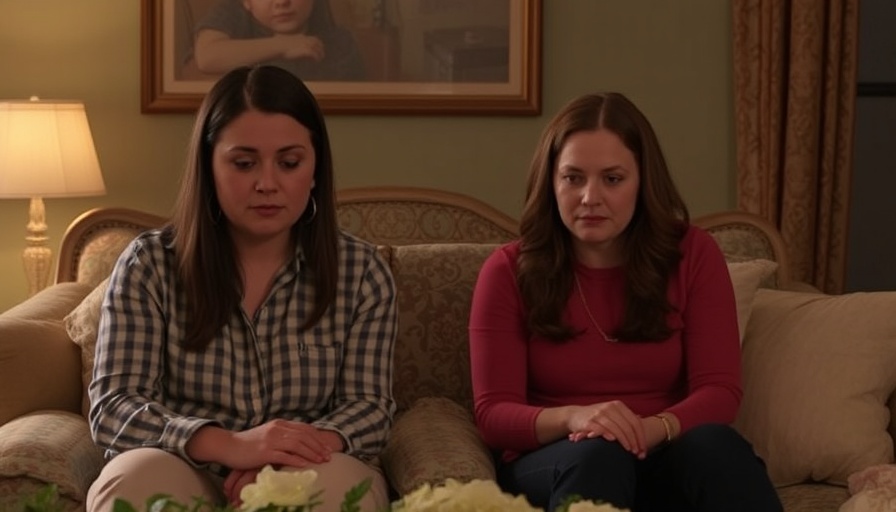
The Mysterious Case: What Happened to Natalia Grace?
In recent years, the unsettling saga of Natalia Grace—a Ukrainian girl adopted by an American family—has captivated audiences, combining elements of intrigue, family dynamics, and the complexities of care. Now the narrative has made its way to the screen with Good American Family, a limited series that recounts the chilling events surrounding her adoption and the dramatic fallout that ensued. At the center of this eight-part series is Ellen Pompeo's portrayal of Kristine Barnett, a mother whose journey oscillates between maternal instinct and suspicion.
A Gripping Story with Multiple Perspectives
The unique narrative structure of Good American Family delves deep into the tug-of-war of perspectives and timelines. When it comes to stories of familial strife, particularly in the context of adoption, it becomes essential to highlight different viewpoints—especially when a case as convoluted as Natalia's unfolds. By presenting competing viewpoints and a non-linear timeline, the series manages to offer a deeper exploration of the emotional complexities that families often face when bringing someone new into their unit. This approach not only reflects the intricacies of adoption but also engages viewers’ curiosity about the truth behind the headlines.
Parallels to Cultural Narratives
The narrative resonates with several cultural phenomena, particularly that of the 'mother as warrior.' Kristine Barnett's character navigates the complicated landscape of societal expectations surrounding parenting. This cultural critique aligns with various narratives in contemporary media that probe into the realities of parenthood and the societal machine that validates certain norms. Interestingly, we see a reflection of this in the documentary landscape, especially in recent chronicles of viral parenting figures and their crumbles—documentaries such as those detailing the scandals surrounding the Stauffers and the Frankes. These parallels serve as reminders that behind the curated lives presented on social media often lie hidden struggles. Playing into this theme, Good American Family invites discussion on what truly lies beneath the perfect family facade.
Future Insights: Where Is This Going?
The increasing allure of tabloid stories presented through a serious lens signifies a cultural shift towards examining authenticity. As audiences yearn for captivating tales that provoke thought and critique social constructs, productions like Good American Family may pave the way for future content that delves into the intricacies of family dynamics with a more serious underpinning. By unpacking the emotions surrounding familial relationships, especially in situations filled with suspicion and betrayal, we could witness a genre of storytelling that embraces emotional depth over sensationalism.
Understanding the Community Response
The intriguing case of Natalia Grace has spurred reactions from various communities. Online discussions showcase differing opinions, with many viewers expressing outrage at the apparent negligence and cruelty while others empathize with Kristine's apprehension. The series sheds light on broader discussions regarding the responsibilities of adoptive parents and the support systems available to them—a reflection on the communal aspects of adoption and social abandonment. The show is not merely about the individual families; it invites everyone into the conversation about how society values and nurtures its most vulnerable members, including children from challenging backgrounds.
Wrapping It Up: A Cautionary Tale?
As we explore the depths of narratives like that of Natalia Grace, we begin to question what constitutes truth and who gets to tell the story. Good American Family may entertain, but it also serves as a cautionary tale, provoking discussions around the ethics of adoption and the societal pressures faced by families today. For digital nomads, coupled with the pursuit of a culturally rich lifestyle, stories like these become vital cultural touchstones that shape our understanding of familial bonds—both real and fabricated.
As you navigate your own journey towards understanding diverse cultures, keep an open mind towards stories like this one. They remind us that behind every façade, there are layers of complexity waiting to be discovered.
 Add Row
Add Row  Add
Add 




Write A Comment